 In the oral cavity inflammation processes often occur, the causes of which vary significantly.
In the oral cavity inflammation processes often occur, the causes of which vary significantly.
With obvious mucosal lesions, they speak of the development of stomatitis, which in a number of cases is extremely difficult to diagnose because of the similarity of symptoms typical for many types in the early stages of the disease. But it is possible to cure quickly only if an accurate diagnosis is made.
Contents
- Causes and factors contributing to the development of the disease
- Traumatic stomatitis
- Allergic stomatitis
- What you need to know about catarrhal stomatitis
- Lesion by fungi
- Infection disorder
- How many days does stomatitis go?
- Diet as an indispensable component of
therapy. Causes and factors contributing to the development of
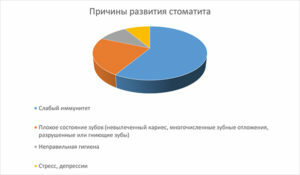 disease. The factors that have the most diverse nature can provoke the development of an unpleasant sensation of stomatitis.
disease. The factors that have the most diverse nature can provoke the development of an unpleasant sensation of stomatitis.
Negative effects can be local, if the irritant is present directly in the oral cavity, or common, when stomatitis is the result of other chronic diseases, allergic reactions, metabolic disorders or reduced immunity.
Among the possible local causes can be identified trauma caused by mechanical, physical or chemical effects, negatively affecting the consequences of poor oral hygiene( carious processes, tartar, the presence of periodontal disease).
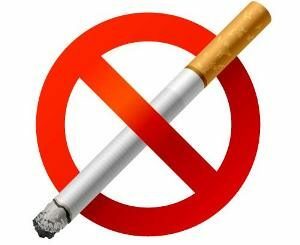 Another reason for stomatitis are some medications, the result of which is the reduction of salivation and drying of the mucosa.
Another reason for stomatitis are some medications, the result of which is the reduction of salivation and drying of the mucosa.
The risk of developing the disease and smokers.
To effectively and quickly get rid of stomatitis it is necessary to consider the type of disease and the cause of it caused.
Traumatic stomatitis
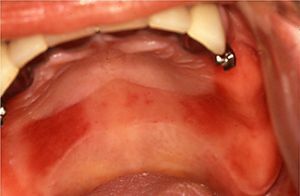
In case of acute damage( biting the mucous membrane, injuring with a sharp tooth or solid food), the wound appears quickly epithelizing and healing without the use of medicines for 1 day.
To accelerate the healing process, antiseptic rinses with herbal decoctions and hygiene of the oral cavity can be performed.
In chronic trauma, when the mucosa is constantly exposed to an irritant factor( the edges of dentures or sharp teeth), the situation is often aggravated by the attachment of a bacterial infection with the appearance of signs such as redness and swelling of inflamed areas, the formation of superficial erosions or deep ulcers.
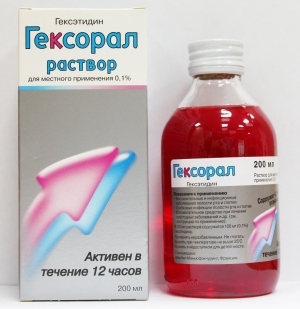 In this situation, the treatment begins with the elimination of the cause of the injury, followed by oral processing with the use of antiseptic( Geksoral) and rinse with infusion of chamomile or calendula, furatsilina solution. At the expressed painful sensations use applications with an anesthetic( Lidocaine asept) use.
In this situation, the treatment begins with the elimination of the cause of the injury, followed by oral processing with the use of antiseptic( Geksoral) and rinse with infusion of chamomile or calendula, furatsilina solution. At the expressed painful sensations use applications with an anesthetic( Lidocaine asept) use.
If the injury is caused by the action of chemicals, not only the surface damage of the tissues in the form of erosions, but also their necrosis( necrosis) can be observed.
The first aid is washing the oral cavity( a solution neutralizing the action of acid or alkali), after which the affected area of the mucosa is anesthetized and an antiseptic drug is applied.
In a number of cases, when forming cramping during eating and talking, the treatment consists in carrying out a plastic surgery.
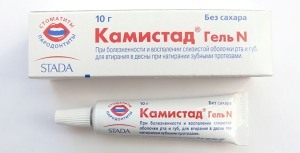 Injuries caused by a physical factor( hot water or steam, electric current, etc.) can be accompanied by signs of the development of infection( fever, weakness, reddening of the inflamed area and severe soreness) to the characteristic sign in the form of puffiness and the appearance of erosion.
Injuries caused by a physical factor( hot water or steam, electric current, etc.) can be accompanied by signs of the development of infection( fever, weakness, reddening of the inflamed area and severe soreness) to the characteristic sign in the form of puffiness and the appearance of erosion.
To get rid of stomatitis, the wounds are treated with an antiseptic solution( Chlorhexidine), an anesthetic gel( Kamistad), and rinse.
Allergic stomatitis
The main symptoms of this type of disease are:
-
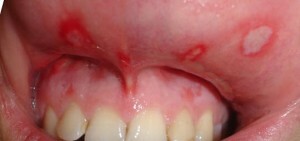 dry mouth, burning sensations and itching, taste disorders with the appearance of metallic aftertaste, soreness in eating, swelling and redness of the mucosa;
dry mouth, burning sensations and itching, taste disorders with the appearance of metallic aftertaste, soreness in eating, swelling and redness of the mucosa; - in case of worsening of the condition - the formation of different vesicles filled with transparent contents, after opening the blisters, the morbid erosion is covered with fibrinous coating, the state of health worsens, the temperature rises;
- is often accompanied by signs of irritability and insomnia.
When choosing a treatment regimen, first determine the allergen-causing stomatitis, then carry out measures to eliminate its effect:
- in the presence of an allergen in the filling or prosthesis replace the existing designs;
- if the allergy is caused by antibacterial drugs, they are canceled or the dosage is revised.
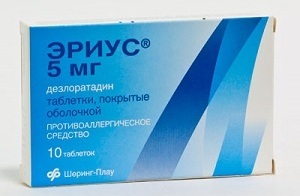 Then prescribed antihistamines( Suprastin, Erius), with the development of severe forms of allergic stomatitis intravenously administered hormonal drugs that are part of the group of glucocorticosteroids( Dexamethasone).
Then prescribed antihistamines( Suprastin, Erius), with the development of severe forms of allergic stomatitis intravenously administered hormonal drugs that are part of the group of glucocorticosteroids( Dexamethasone).
Simultaneously, they begin therapy with analgesics and anti-inflammatory non-steroid drugs to stop the pain syndrome.
Also, local treatment with special antiseptics is performed. During treatment the patient should be observed not only by the dentist, but also by the allergist.
What you need to know about catarrhal stomatitis
Symptoms are:
- swelling, redness and tenderness of the mucosa;
- appearance of yellow or white plaque;
- increased salivation;
- appearance of bad smell from the mouth;
- gum bleeding.
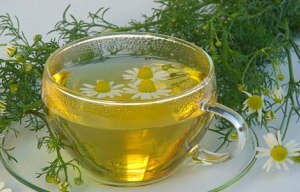 Treatment begins with the elimination of the inflammatory process by frequent rinsings with herbal decoctions or antiseptic solutions.
Treatment begins with the elimination of the inflammatory process by frequent rinsings with herbal decoctions or antiseptic solutions.
Simultaneously, anti-inflammatory drugs are prescribed in the form of benzocaine( Dentol), lidocaine or aloe juice, which additionally removes pain. If necessary, local anesthetics may be prescribed.
Also, the therapy involves eliminating the causes of the disease local causes( caries treatment, removal of calculus) and hygiene of the oral cavity.
In some cases, immunostimulatory treatment becomes appropriate.
Defeat of fungi

On the mucous surface there are covered with curdled white spots, which are swollen foci of inflammation. In parallel, jaundices can be formed in the corners of the mouth. At the same time, dryness and burning on the mucosa are noted.
Inflammation of fungal formations leads to the formation of painful erosions. If the disease passes into a severe form, there is an increase in temperature to 38-40 degrees and pronounced lymphadenitis.
Therapy begins with the creation in the oral cavity of an alkaline medium, which prevents reproduction of the fungus( a solution of soda or boric acid is suitable).
For the removal of inflammation use blue-tooth, which at least twice a day to treat the cheeks and gums. Also, Candida or Nystatin is prescribed.
The triggered cases are treated with Diflucan. Additionally, vitamin complexes can be prescribed.
Infectious Disturbance of
Symptoms of infectious stomatitis caused by adenovirus, the herpes virus or other infection are:
- general malaise, muscle and headache;
- temperature increase;
- the appearance of pain in the oral cavity, the mucosa of which becomes swollen and reddened;
- formation of liquid-filled bubbles, which, bursting, can merge into white-covered, extensive erosion.
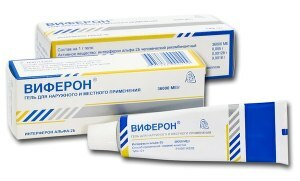 Therapeutic therapy implies:
Therapeutic therapy implies:
- neutralization of the virus through special drugs( Acyclovir, Viferon, Zovirax);
- detoxification activities with antihistamines, vitamin and immunotherapy( Imudon);
- prescribing painkillers and medications that accelerate the healing of painful sores ( gel Solcoseryl, sea buckthorn and dog rose oil);
- also, keratoplasty preparations with an increased vitamin A content of are used to accelerate healing. The manifestations of bacterial stomatitis are a sensation of burning and itching, soreness of the mucosa in eating, the appearance of small limited redness on the inside of the lips, the border of the soft and hard palate( sometimes in tongue and cheeks) that transform into open erosions without film or plaque. Often the pathological process is accompanied by a temperature that lasts no more than a week.
To eliminate erosion, local therapy is used with the appointment of analgesics and antiseptics, which remove inflammation and accelerate the epithelization of drugs( in the form of applications).A good effect is given by antiseptic rinses( Miramistin).
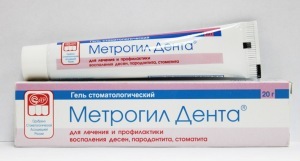 Sometimes additionally prescribed sulfonamides or antibiotics( Metrogil Denta).
Sometimes additionally prescribed sulfonamides or antibiotics( Metrogil Denta).When bacterial stomatitis passes into ulcerative necrotic form( gingiva loosens, bleeds begin, necrosis of interdental gingival papilla tissues develops), antibiotic therapy is mandatory.
How many days passes the stomatitis?
Of course, within 1 day, the inflammation of the oral mucosa is not cured. Most often, the treatment does not take more than 7-14 days. If the stomatitis does not pass or takes place more than week it is necessary will address to the stomatologist for specification of the reason of disease and correction of treatment.
Diet as an indispensable component of
therapy Effective treatment of stomatitis is impossible without adherence to a special diet, in which there is no place for spicy, acidic, salty, too cold or hot, rough food.
 With this disease, cabbage and carrot juices are especially useful, which can also be used for rinses. Meat is preferably cooked in the form of bits, pates or steam cutlets, but in a limited amount( like the rest of the protein food).
With this disease, cabbage and carrot juices are especially useful, which can also be used for rinses. Meat is preferably cooked in the form of bits, pates or steam cutlets, but in a limited amount( like the rest of the protein food).Porridges should be viscous, so it is better to give preference to rice, oatmeal or semolina. You can prepare broths with the addition of bay leaf, make a menu of dairy dishes( sour cream, yogurt, yogurt, kefir) of any percentage of fat.
Also, an abundant, slightly warm drink is recommended in the form of a broth of dog rose, tea, plain water.
Contraindicated carbonated drinks, citrus and coffee juices, milkshakes.Berries and fruits should be distinguished by a neutral taste, while using them preferably in the form of a mashed puree through a sieve or whipped with a blender.
When fungal stomatitis should be limited to the amount of carbohydrates that are present in flour, sweet and starchy dishes.
